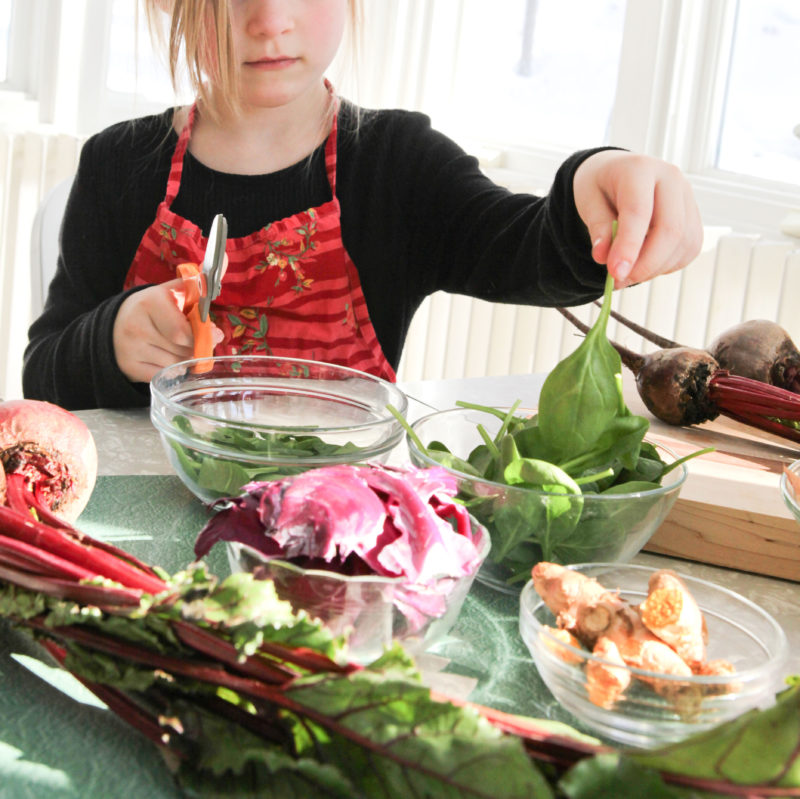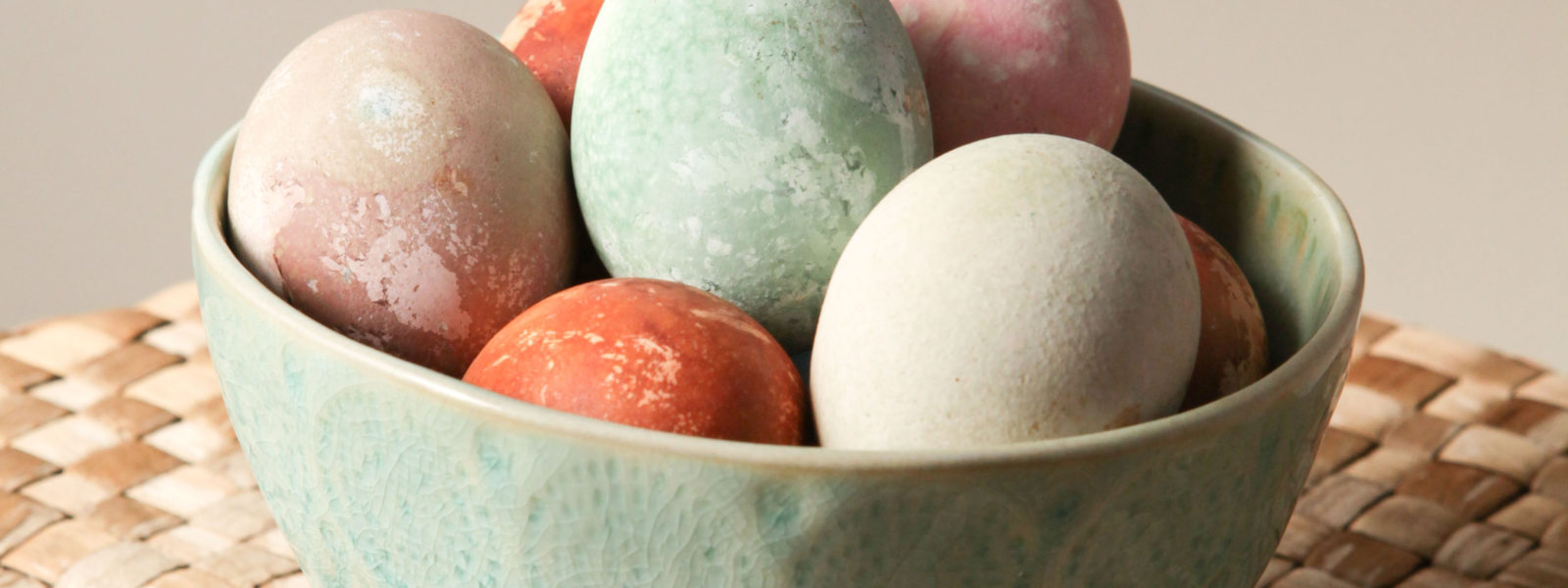How to Use Natural Egg Dyes



White-shelled eggs, hollowed (see below for how-to)
Cups or pots, one for each dye color, deep enough for liquid to cover egg
Bowls or egg cartons for drying dyed eggs
Paper towels
1 Tbsp white vinegar per cup of strained dye liquid (optional – when you add vinegar to water, the calcium in the shell reacts with the acid in the vinegar to make carbon dioxide creating ideal conditions for dyeing eggs!)
How to hollow eggs
Gently wash eggs with soap and water.
Delicately push a pin or sewing needle into each end of the egg. Wiggle the needle around in a circular motion to open the hole at one end of the egg and break the yolk inside.
Empty the contents of the egg into a bowl. The egg will keep in the refrigerator for up to two days. (Try making this simple two-ingredient pancake recipe!)
Shop for the veggies and other items that you’ll use for creating your dyes. Gather these in the days leading up to your egg-dying egg-stravaganza.
– Red cabbage (blue, almost-indigo dye)
– Red onion skins, grape juice, red wine (lavender or red)
– Yellow onion skins (orange or gold)
– Ground or cut turmeric (yellow)
– Beets (pink – leave eggs in the dye longer for a reddish-brown hue)
–Coffee (brown)
Use roughly 4 cups dye ingredients per4–6 cups of water. The more concentrated your ingredients, the more vibrant your eggs will come out.
Chop your ingredients finely by hand or in a food processor. Add to pot of water and bring to a boil.
Turn heat to low and simmer, covered, for 15–30 minutes. The dye is ready when it reaches a hue a few shades darker than you want for your egg.
Remove from heat and add white vinegar to the water. Allow to cool.
Strain out the dye ingredients and set your hollowed eggs in the dye for several hours or overnight..
Dry your eggs in bowls or eggs cartons overnight.
We use cookies to improve your experience on our site. By using our site, you consent to cookies.
Websites store cookies to enhance functionality and personalise your experience. You can manage your preferences, but blocking some cookies may impact site performance and services.
Essential cookies enable basic functions and are necessary for the proper function of the website.
Google Tag Manager simplifies the management of marketing tags on your website without code changes.
These cookies are used for managing login functionality on this website.
Marketing cookies are used to follow visitors to websites. The intention is to show ads that are relevant and engaging to the individual user.
Facebook Pixel is a web analytics service that tracks and reports website traffic.
Service URL: www.facebook.com (opens in a new window)